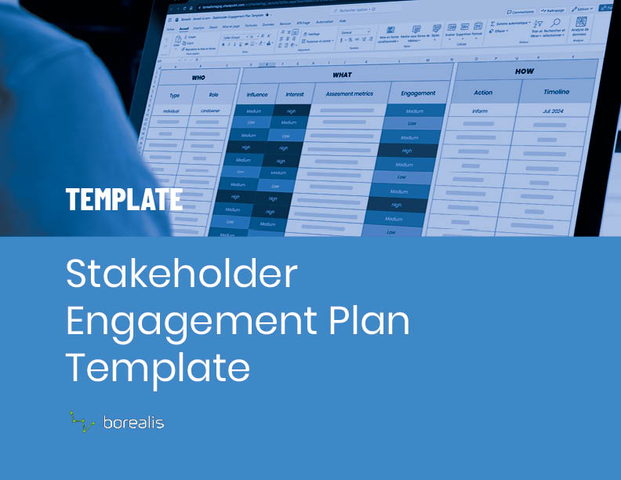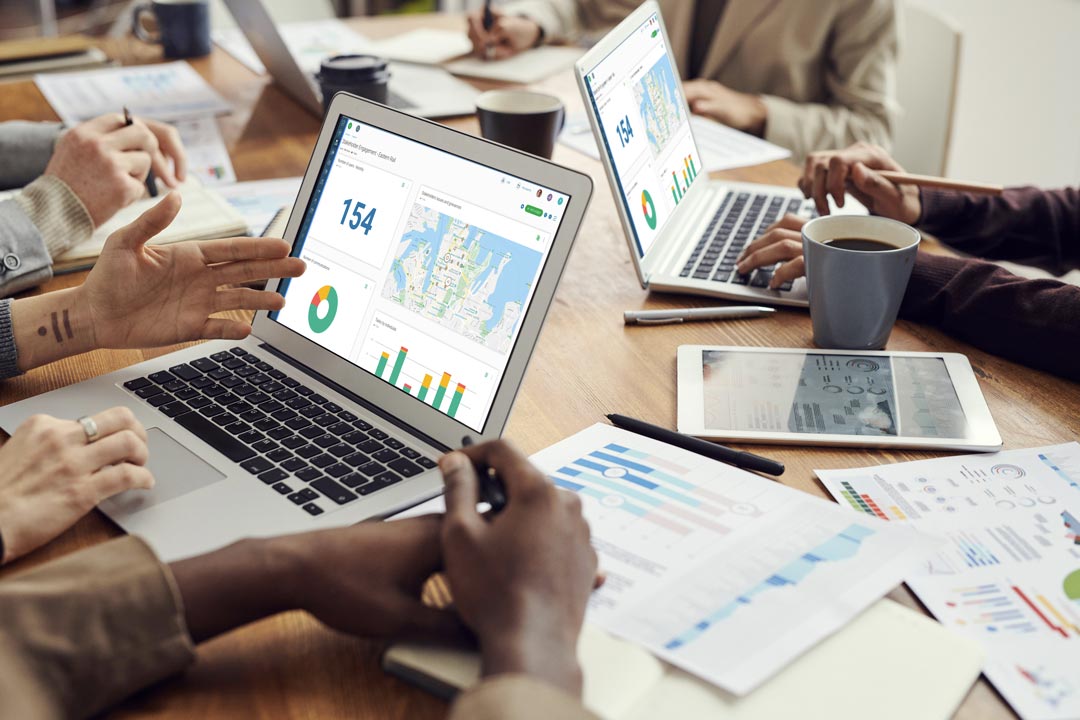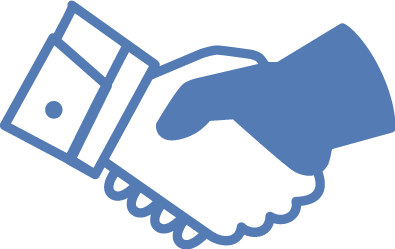Many medium and large-sized companies have a significant number of stakeholders, necessitating the creation of a stakeholder register. Whether internal (executives, managers, shareholders, etc.) or external (users, government, interest groups, etc.), stakeholders tend to multiply rapidly during large-scale projects. For example, infrastructure construction projects require a considerable amount of time and the involvement of a multitude of individuals and groups. So, how will these companies manage the complex relationships between stakeholders and their projects?
Companies need to centralize their data to manage it efficiently, as the associated benefits are far from negligible.
There are several solutions available to them for this management. While some choose to work with a database created in a spreadsheet (Excel), a collaborative platform (Sharepoint), or a CRM, others turn to software specifically designed for stakeholder management. This software is called the stakeholder register.
What is a stakeholder register?
A stakeholder registry, also sometimes called stakeholder registry, involves the identification and analysis of all individuals who have an influence or interest in a project or may be affected by its impacts.
Once stakeholders are identified and listed, the register also allows for the collection of additional information such as interests, concerns, attitudes, and the location of various stakeholders.
Why do organizations need a stakeholder register?
It is essential to establish a stakeholder register since their participation can be potentially decisive in the success of a project. The numerous actors involved in a large-scale enterprise need to have access to a reliable source of information at all times.

Stakeholder Register Model: Never Miss Crucial Information!
Your stakeholder register model will serve as a blueprint for all your future projects. Therefore, it should include any information you want to replicate in different initiatives. This way, you never have to worry about forgetting key information!
Your stakeholder register model should include the following information:
- Name
- Role or title of the stakeholder
- Category (internal or external; primary or secondary)
- Level of influence on the project (low, medium, or high)
- Level of interest in the project (low, medium, or high)
- Specific needs or desires
- Primary form of communication
- Type of information they prefer in updates
- Desired frequency of updates
- Contact information
- Any additional notes

How to develop a clear and effective stakeholder register?
1) Define the purpose of the stakeholder register
Clarify the specific objectives of the stakeholder register. What information do you want to gather, and how will it be used?
2) Identify stakeholders
Conduct a thorough analysis to identify all potential stakeholders, both internal and external. Involve project team members and existing stakeholders.
3) Collect relevant information
For each identified stakeholder, gather the key components of a stakeholder registry as indicated in the section above.
4) Use a stakeholder management tool
With the Borealis tool, input the collected data into the system and explore the features offered by the tool to maximize stakeholder management efficiency.
5) Establish categorization
Define criteria to categorize stakeholders based on their level of influence, interest, decision-making power, etc.
6) Categorize stakeholders
Use the defined criteria to classify each stakeholder into a specific category. This categorization will help tailor the management strategy to the needs of each group.
7) Regularly update
Establish a frequency for updating the stakeholder registry to ensure its relevance throughout the project lifecycle.
And for optimal stakeholder management, commit early by identifying stakeholders at the project’s outset, establish open communication channels to actively gather their feedback, and prioritize them based on their potential impact to concentrate efforts on crucial relationships. By following these steps, you will be better equipped to create and maintain an effective stakeholder register effortlessly!
Stakeholder register in project management
The role of a stakeholder register in successful project management
A stakeholder register is crucial in project management. It provides an overview of internal and external actors. By identifying stakeholders’ expectations, interests, and levels of influence, it enables the development of more tailored management strategies.
Case studies or examples of stakeholder registers in action
For example, in a wind farm construction project, local residents‘ concerns about potential visual impacts are crucial to address. The stakeholder register becomes a strategic tool in guiding the project team towards targeted communication. By specifically identifying visual concerns, the team can tailor its messages to provide clear information and design mitigation solutions that directly address the concerns, promoting a proactive approach to stakeholder relationship management.
Why is the stakeholder register important for Project Management Professional (PMP) candidates?
PMP-certified professionals must demonstrate their ability to anticipate, identify and manage relationships with all stakeholders involved in a project, including the creation and maintenance of a stakeholder registry.
The PMBOK® Guide (Project Management Body of Knowledge Guide), which forms the basis of PMP certification, includes stakeholder management as one of the essential knowledge areas. In the context of PMP certification, candidates must demonstrate their understanding of the creation and management of a stakeholder register.
Choosing the right tools for your stakeholder register
Thanks to its specialized tools, Borealis makes it easy to set up and manage a stakeholder register, enabling companies and project teams to proactively manage their stakeholder relations throughout a project’s lifecycle. The stakeholder management module centralizes all data and keeps it at hand to simplify day-to-day tasks.
The PMBOK® Guide (Project Management Body of Knowledge Guide), which forms the basis of PMP certification, includes stakeholder management as one of the essential knowledge areas. In the context of PMP certification, candidates must demonstrate their understanding of the creation and management of a stakeholder register.
What are the weaknesses of traditional databases?
Unfortunately, many companies are still using unsuitable media to build up a register of their stakeholders. Traditional databases can be of some use if the volume of entries is small. But for large-scale projects, these solutions don’t quite meet the requirements of an efficient and secure data management system.
The security issue
The protection of confidential data is not guaranteed, and their vulnerability exposes them to being copied, modified, manipulated and even deleted, whether on purpose or inadvertently, with no way of knowing the origin of the action.
The quality
A study published in the Journal of Organizational and End User Computing concludes that 88% of spreadsheets contain errors. And some errors have cost companies millions and even billions of dollars.
A small change in a spreadsheet can throw different versions of documents out of sync, and the single source of truth can disappear. As a result, the value of all data is diminished.
Traceability
Overwritten or duplicated files, incomplete data and inaccessible documents are just some of the problems that can affect users of traditional databases.
As for collaborative and CRM platforms, they prove rather useless when it comes to obtaining an overview of an item, or analyzing data and drawing conclusions. Companies that embark on CRM customization often find themselves investing significant human and financial resources, only to end up with a tool that proves ineffective for managing their stakeholder relationships.
Why invest in a modern stakeholder register solution?
A good database dedicated to stakeholder relationship management – better known as a stakeholder management tool, system or software – provides access to relevant information, reduces the time and effort involved in creating reports, and increases data security. This includes the following features:
It facilitates data management
- By ensuring that everyone has access to the same information, from a single source of truth.
- By facilitating the rapid transmission of information (events, conversations, decisions, etc.).
- By assigning access rights according to specific needs
- By enabling integration with external tools (participation platform, e-mail software, etc.)
- By simplifying data analysis, report creation and transmission
Helping to make informed decisions, develop proactive strategies and protect reputations
- Mapping stakeholders according to their influence, interests and other relevant criteria.
- By providing a global, unified view of important information, enabling the necessary actions to be taken at the right time
It saves resources
- By making the necessary information available in an efficient way, avoiding misunderstandings and repetition
- By automating some of the tasks involved in mobilization work

Investing in a modern stakeholder management solution like Borealis is essential. This platform offers an integrated approach to tracking, analyzing and engaging stakeholders throughout projects. With advanced features such as stakeholder mapping and automated reporting, Borealis is a strategic choice, promoting efficient and transparent management of stakeholder relations.
How can I keep my stakeholder register constantly up to date?
To ensure the continued relevance of the stakeholder register throughout the project lifecycle, be sure to review the register regularly to ensure that it is up to date. Update stakeholder expectations as the project evolves, and hold regular meetings to understand their concerns.
You could also classify stakeholders according to their level of influence and adjust this classification. Be sure to keep stakeholders informed of progress, changes and challenges, using a variety of communication channels. Regularly solicit feedback to assess satisfaction.
Finally, identify stakeholder risks and develop mitigation plans. Reassess these risks periodically to keep plans relevant. You may wish to provide ongoing training for the team to take account of new stakeholders and changing expectations.
Following this advice will optimize the relevance of the stakeholder register, ensuring effective management throughout the project.
How to avoid the pitfalls?
Managing a stakeholder register can be complex, with common pitfalls to avoid. These include:
- Incomplete stakeholder identification: failing to identify all relevant stakeholders, including those indirectly affected.
- Lack of regular updating: a register needs to be constantly updated to remain effective in the face of changes in the organization, market or regulatory environment.
- Insufficient communication: sharing register information effectively within the organization is crucial to avoid misunderstandings about stakeholder expectations.
- Neglect of prioritization: failing to prioritize stakeholders according to their influence can lead to inefficient allocation of resources.
- Lack of commitment: stakeholder involvement is crucial, and a lack of commitment can hinder project success.
- Inadequate use of information: having a register is one thing, but it’s essential to use this data effectively to influence the organization’s decisions.
- Lack of flexibility: a rigid register can hamper the organization’s ability to adapt quickly to changing circumstances.
- Confidentiality breached: careful handling of sensitive stakeholder information is crucial to avoid trust issues and legal implications.
By avoiding these pitfalls, organizations can maximize the effectiveness of their stakeholder register and improve their ability to manage stakeholder relationships strategically.
Things to remember
- Databases are indispensable, meeting legal requirements.
- Advanced systems go beyond management, enabling proactivity, risk mitigation and building relationships of trust.
- For large-scale projects, more powerful systems are required.
- Investing in a stakeholder management system is cost-effective, offering easy access to up-to-date data and practical tools.
Borealis offers a full range of features and modules to meet the needs of large projects. Talk to one of our experts today to arrange a system demonstration.





